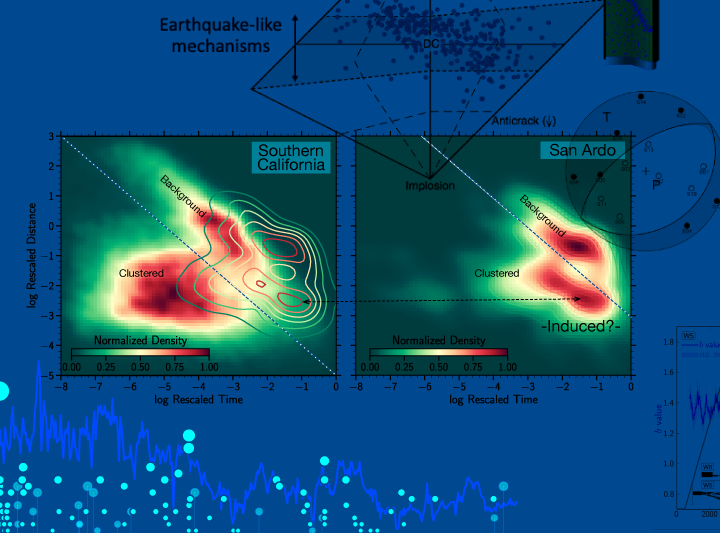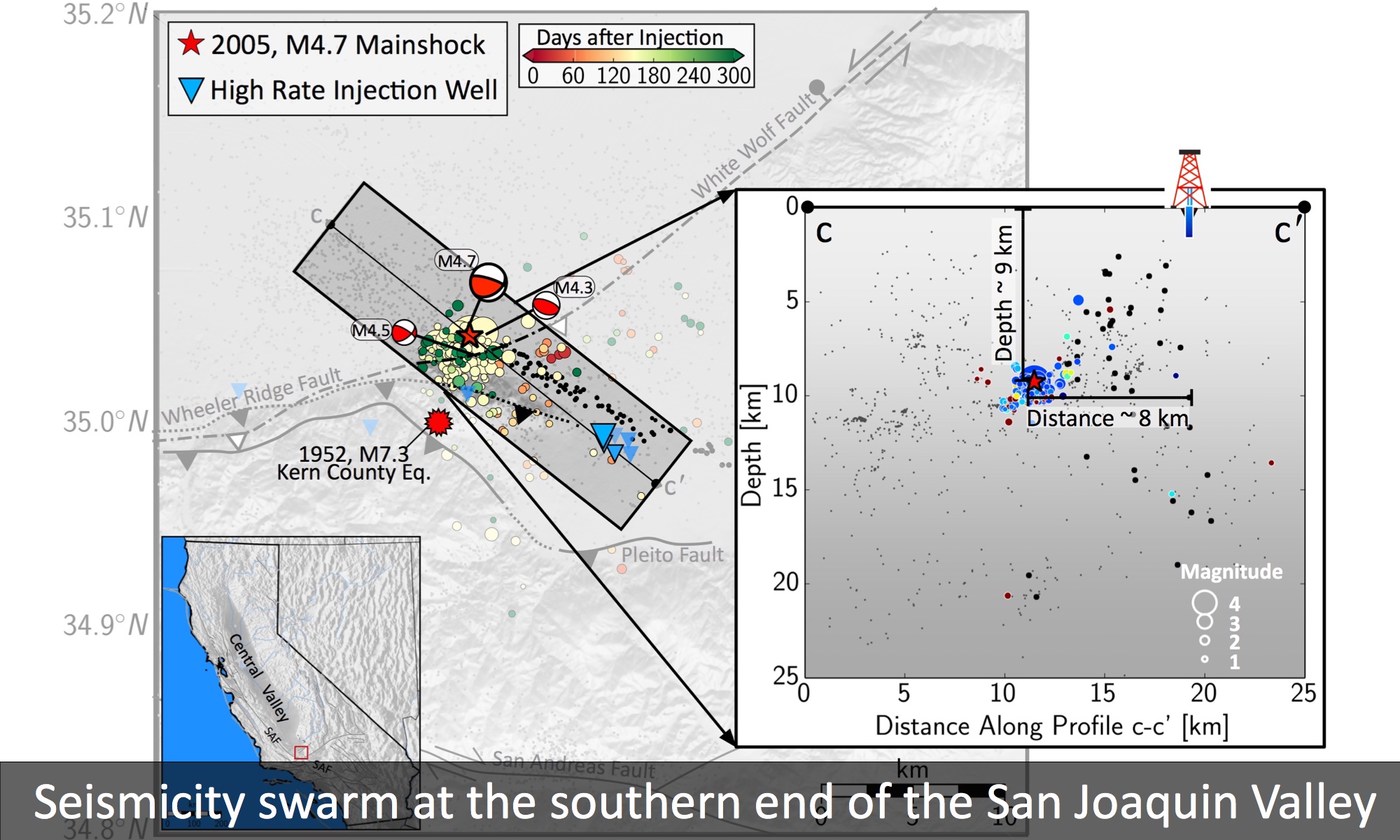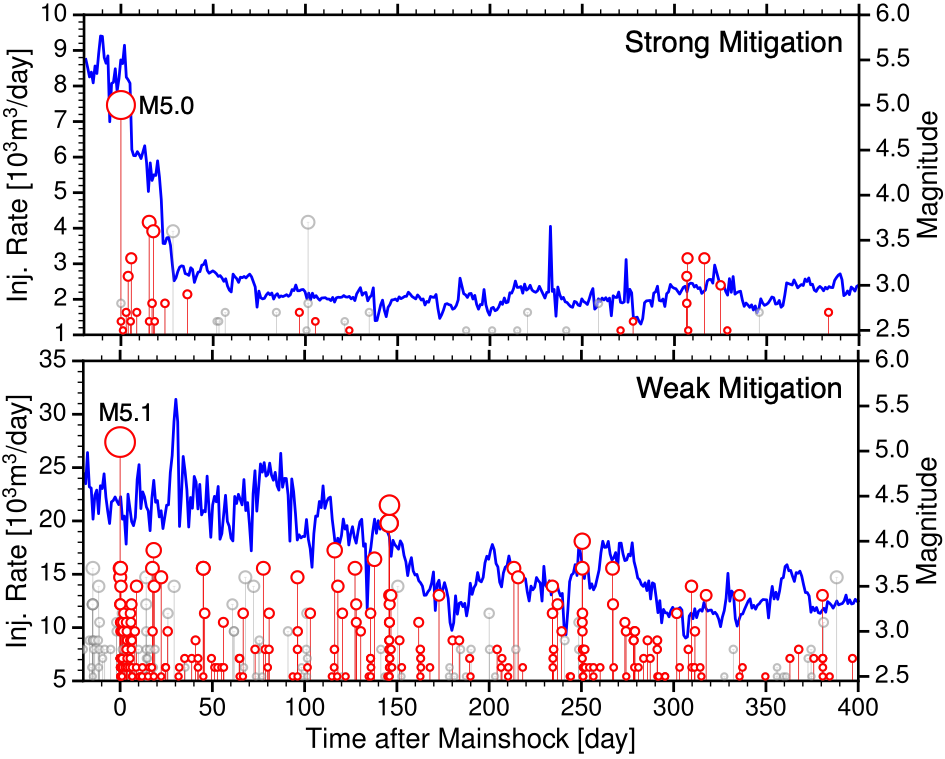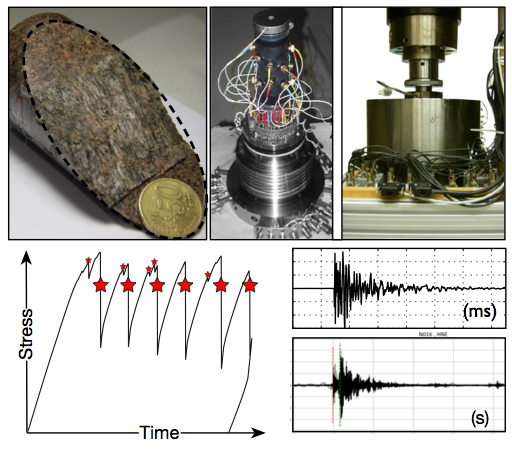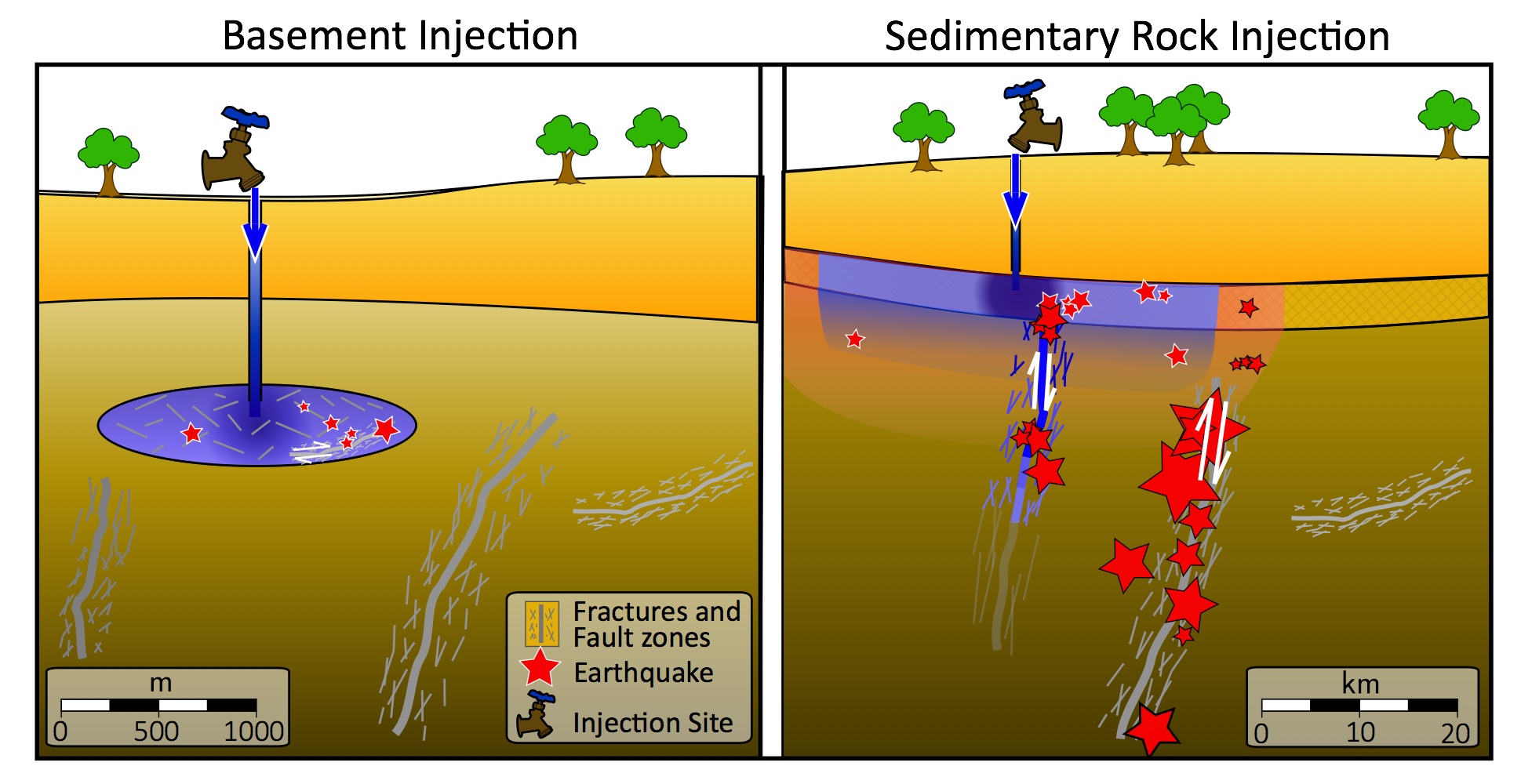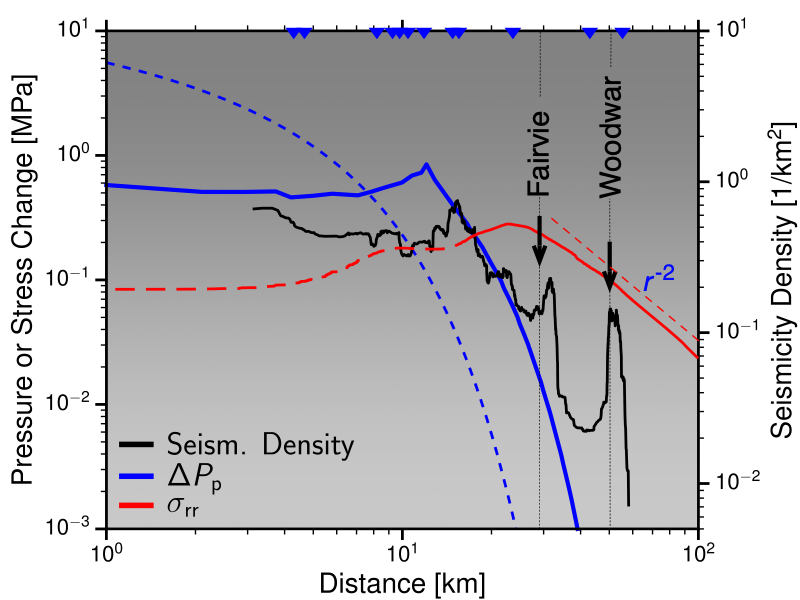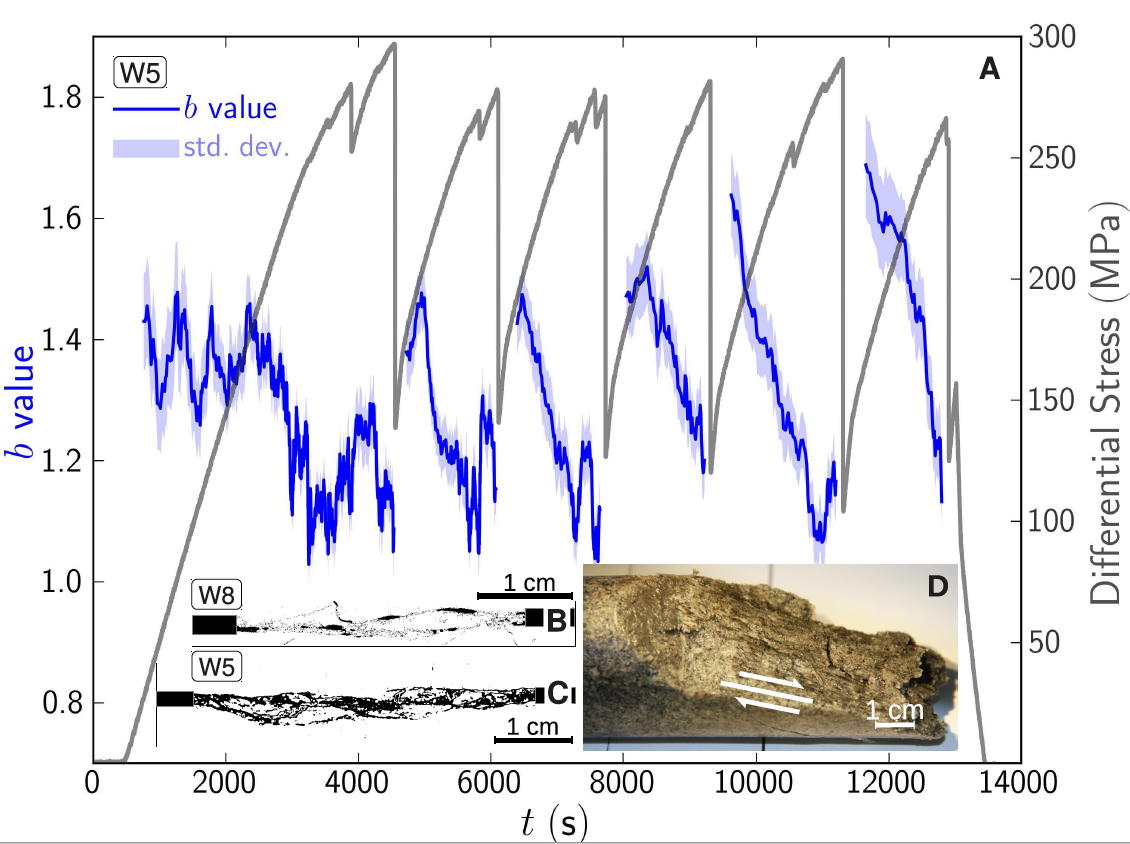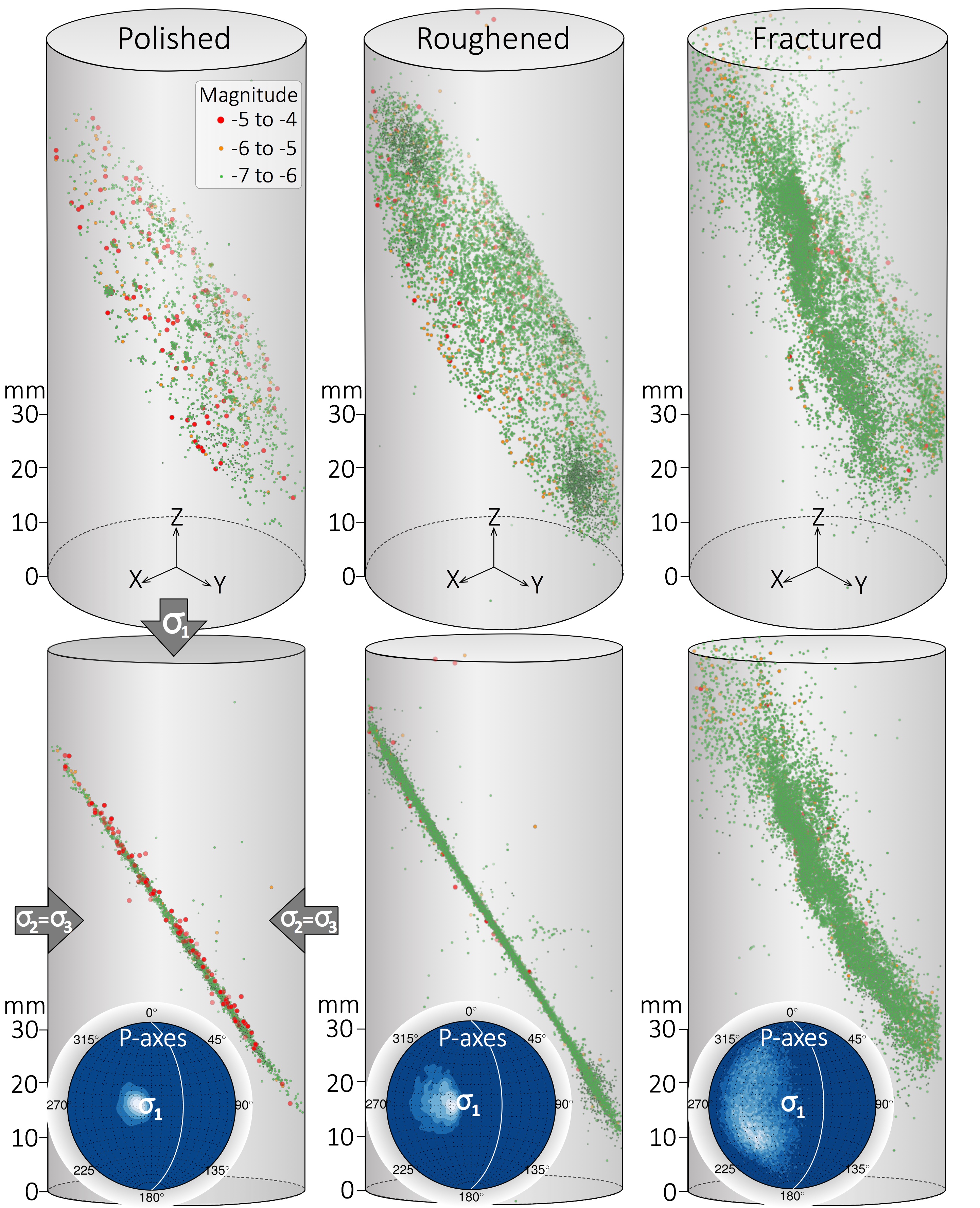The considerable increase in seismicity in central Europe and the central U.S. in recent years has brought much attention to the issue of fluid-injection induced seismicity. Although the detailed mechanisms of this sudden increase are far from clear, the general correlation between increased wastewater injection and seismicity clearly suggest an anthropogenic contribution to the earthquakes. A less-discussed, but equally important issue is the lack of conspicuous induced seismicity in hydrocarbon reservoirs, in California. Injection rates and pressures alone are not a good diagnostic tool for induced earthquakes as many wells are not associated with seismicity. This project focuses on detecting and characterizing induced seismicity in California hydrocarbon basins, modeling induced seismicity mechanisms in Oklahoma and finding underlying causes for deep and distant earthquakes from injection wells.

